MusicRadar Verdict
With or without the wireless capability, the POD Go is a classy piece of kit, with a considerable amount of processing power and superb sounds.
Pros
- +
Compact, easy to use, and wireless.
- +
Great range of quality Helix tones.
- +
128 user presets.
- +
Good value.
Cons
- -
Other Line 6 modellers offer more flexible signal chains.
- -
If you don't need wireless, the regular POD Go is the exact same unit, and cheaper.
MusicRadar's got your back
Line 6 Pod Go Wireless: What is it?
There is a bewildering array of floor-based amp modellers and multi-effects pedals out there. The technology has matured to the point where the quality of the emulations is such that it has loosened our umbilical bond with our analogue guitar amp, and applications seem endless.
We have seen modelling tech on rack-mounted units, practice amps, floorboard devices large and small, and even in the rise of the headphones amplifier. The common denominator in all of these products is convenience and choice.
But let’s not forget, this is the 21st century, why go to all that effort in designing all this algorithmic tone and digital voodoo only to find ourselves tethered to a cable? That’s the conundrum the Line 6 POD Go Wireless looks to solve.
It looks familiar, sure. It’s the same compact compendium of amp models and effects, the same enclosure to the regular POD Go, only there is an in-built Relay G10 unit to let nothing get in between you and your performance. Well, nothing in the shape of a cable at least.
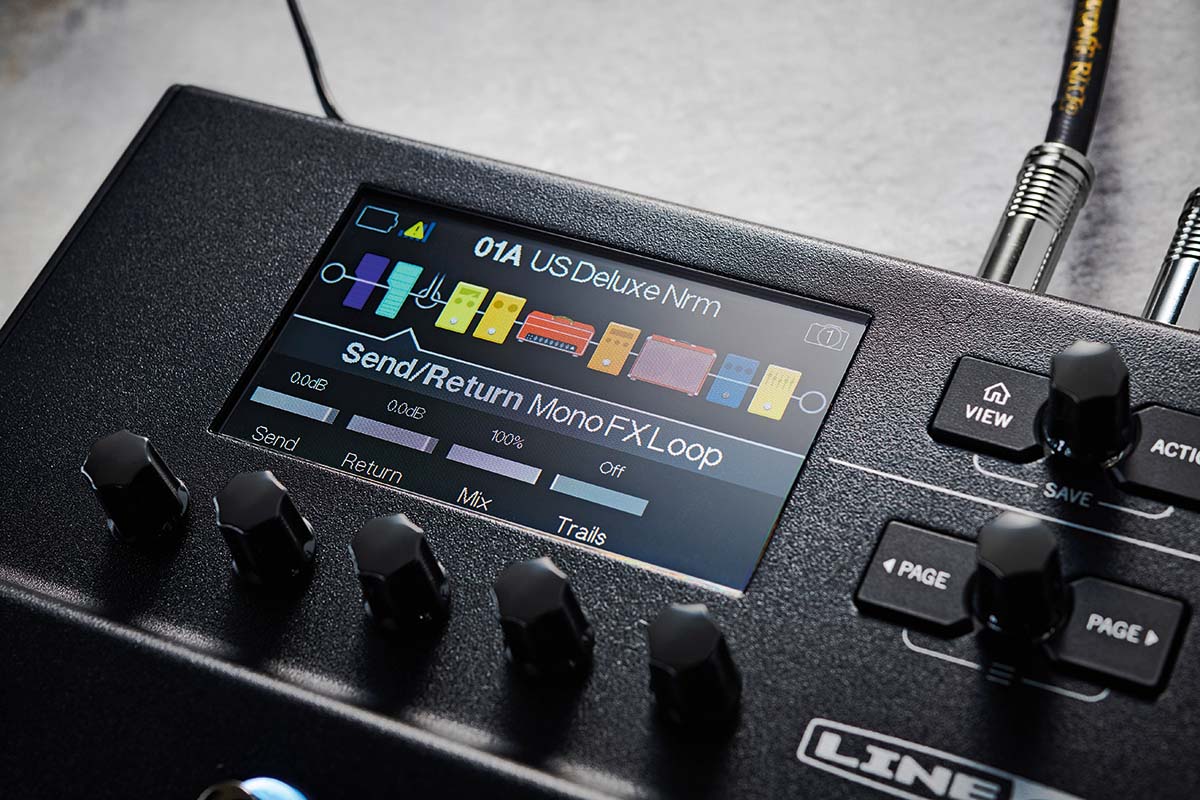
As you may well know, the POD Go is from the affordable end of the Line 6 modelling range. There have to be some concessions to budget, and so the enclosure comprises more plastic than the high-end Helix units. The trade-off is that the modelling on offer is similarly generous, with 85 guitar and bass amp models, 39 cab sims, 16 mic emulations and over 210 effects.
You can also store up to 128 of your own IRs, custom or third-party, on the unit. There’s a lot of functionality. Now, it’s not quite as versatile as the Helix models. You can’t split and merge signal chains between presets; your signal goes into a chain, gets processed and comes back out.
As it does, it can pass through 10 blocks, six of which are ever-present – Wah, Volume, FX loop, Amp/Preamp, Cab/IR and Preset EQ. Another four can be chosen from Distortion, Dynamics, EQ, Modulation, Delay, Reverb, Pitch/Synth, Filter and Looper and placed anywhere you like in that chain.
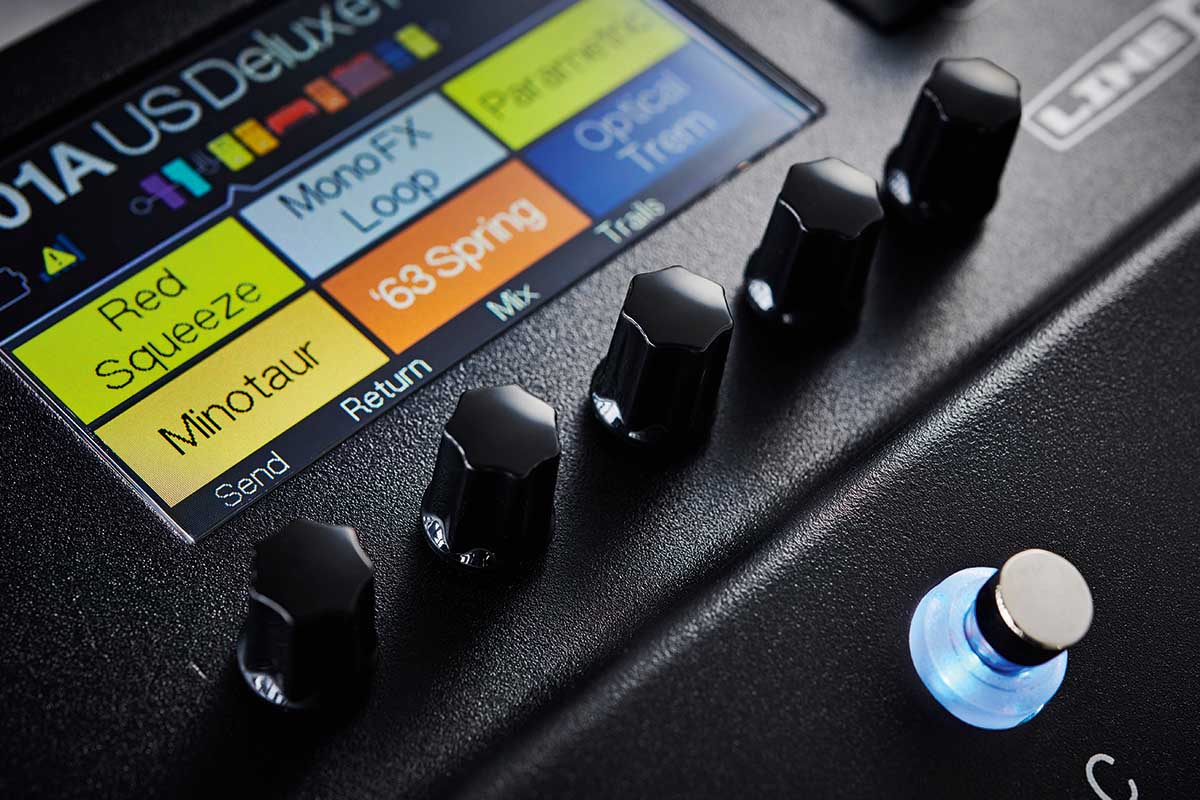
Don’t think Line 6 has left you having to come up with all the presets yourself. Besides your 128 user presets, there are another 128 from the factory. It’s a great place to start.
Line 6 has always prided itself on intuitive design and the POD Go is no different. The user experience is superb. Editing is a breeze. And if you are new to these units, and find the number of options and how they can be arranged an intimidating prospect, we’d wager that it will take you no time to be creating your own signal chains and storing them away.
There is some editing software on hand to help, too, with the POD Go computer-based editor and librarian accessed via USB and a neat way of quickly getting down to business.

Line 6 Pod Go Wireless: Perfomance and verdict
With any of these tricksy floor-based modelling units, the best place to start is with the presets. Not only do they give you a feel for how the unit works, but it also gives you a taste of how much is possible, and the quality of the sounds is incredible.
All styles are catered for. You could be a death metal enthusiast Mon-Fri but play reggae sets at the weekend and the POD Go will have you covered. The POD Go is designed to be used as a fly-rig if required but you can also use it as a de facto pedalboard and hook it up through your guitar amp as such.
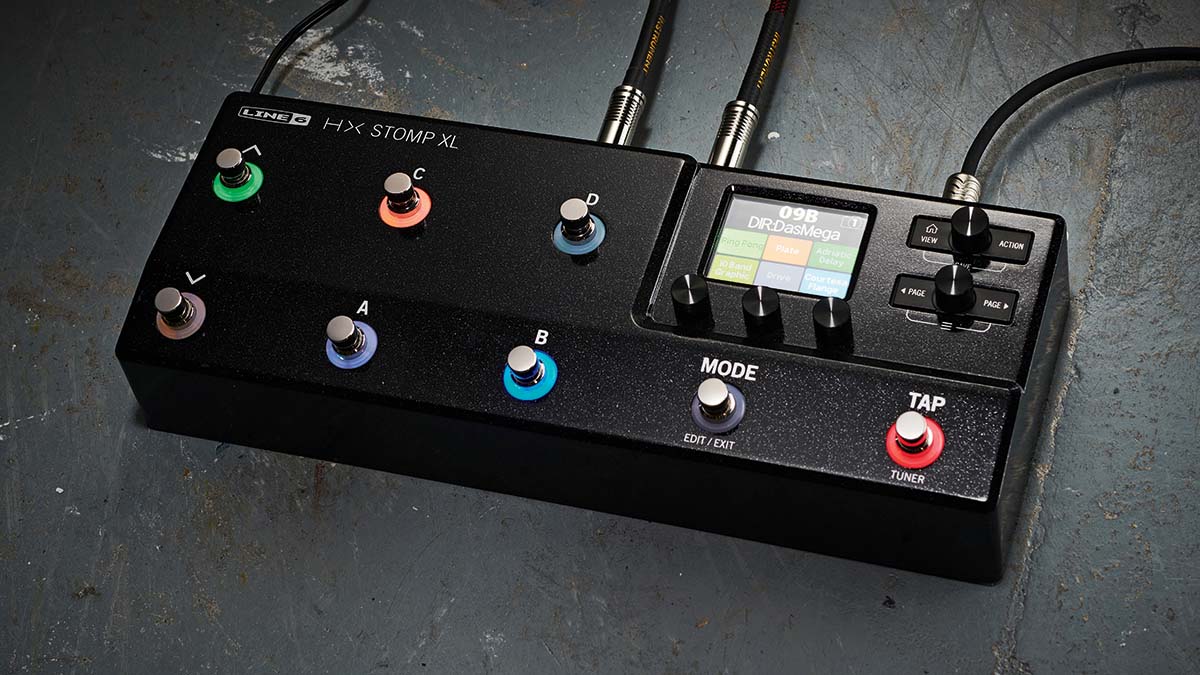
• Line 6 HX Stomp XL
A sensible, practical and ultimately exhilarating take on the Helix Stomp format, the XL's extra footswitches makes it more naturally suited to live performances than its smaller counterpart and yet it is still respectful of that most precious 21st-century commodity – pedalboard real estate. It's a triumph.
• HeadRush Gigboard
If amp sounds are more important to you than effects, we’d plump for the Gigboard over its competitors - although we’d argue it handles cleaner tones better than higher gain settings. Provided it fits your sonic bill, this is a pro-level piece of kit that will simplify the way you record and play live.
It has a range of connections on the rear of the unit to extend its functionality. There is an effects loop for incorporating your pedalboard of favourite hardware fuzz and overdrive pedals. There’s a 1/4” input for a guitar cable – should you prefer that – that doubles as a charger for the Relay G10T transmitter.
The POD Go has an integrated expression pedal that can be assigned to control volume, wah or a user-defined mix of parameters, and a toe-switch lets you toggle between EXP1 and EXP2 modes, with an LED to let you know which is active. But there is an EXP2 input on the back of the unit for connection an auxiliary expression pedal that saves you toggling between the two.
Even without the wireless connectivity freeing you up to go full Angus Young when playing the Dog And Duck the POD Go is designed with performance in mind. The onboard expression pedal and eight footswitches offer plenty of options for putting a set together – all the sounds you need can be easily accessed.
The POD Go automatically powers up in Preset mode, with each bank assigning presets to footswitches A, B, C and D. All you need to do to access more from another bank is use the Up and Down footswitches, then refer to your A-to-D footswitches for the appropriate sound. Simple.
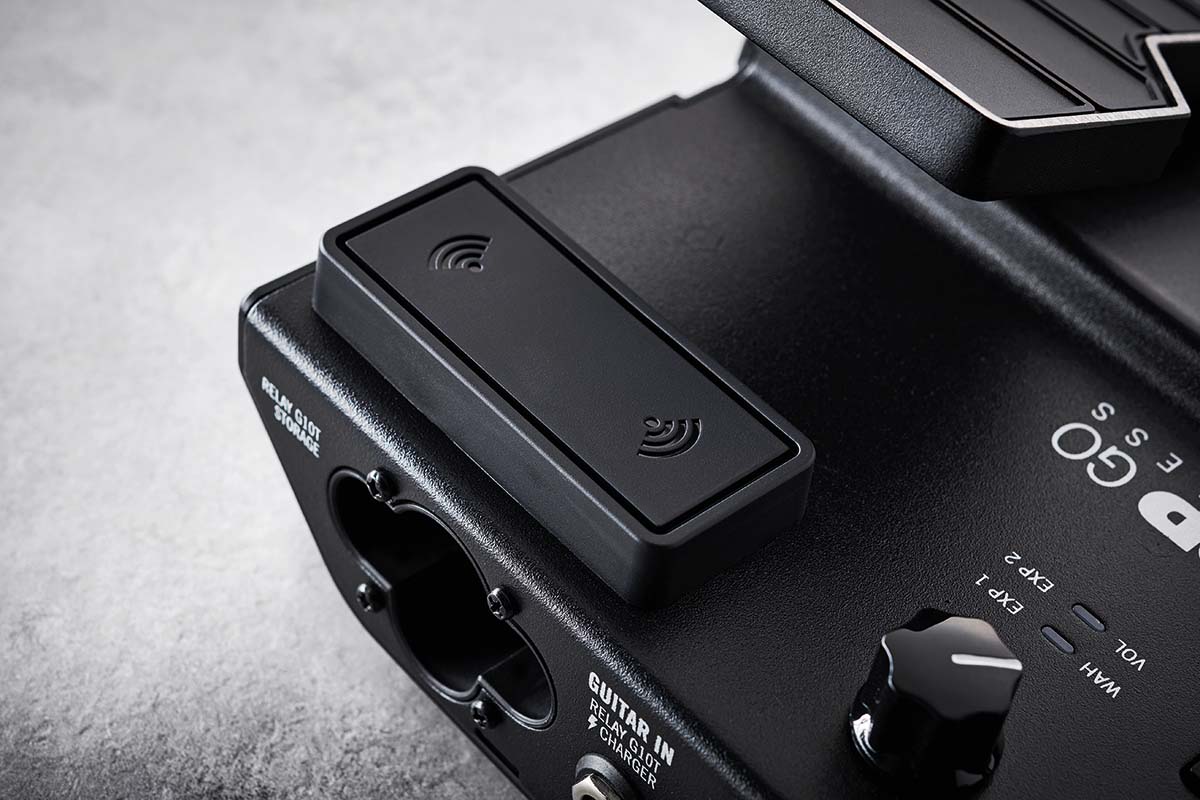
There is, however, a Mode footswitch that can place the unit into Stomp mode. This effectively turns each preset into a pedalboard with the unit mapping out the preset’s active effects on the footswitches. The LED rings around each switch are colour-coded, so it is easy to see when onstage which corresponds to which effect.
Alternatively, there is Snapshots mode. Accessed via simultaneously pressing the Up and Down switches, this allows you to access presets within a master preset with zero latency. You are simply cycling through versions of that same preset, adjusting up to 64 different parameter settings among all the amps and effects.
Snapshots works very well for switching from a rhythm to lead tone, keeping the core of your sound intact but switching to a secondary snapshot preset where the parameters are adjusted, perhaps to add a longer delay or more drive during a solo, or to take an overdrive off for a clean part.
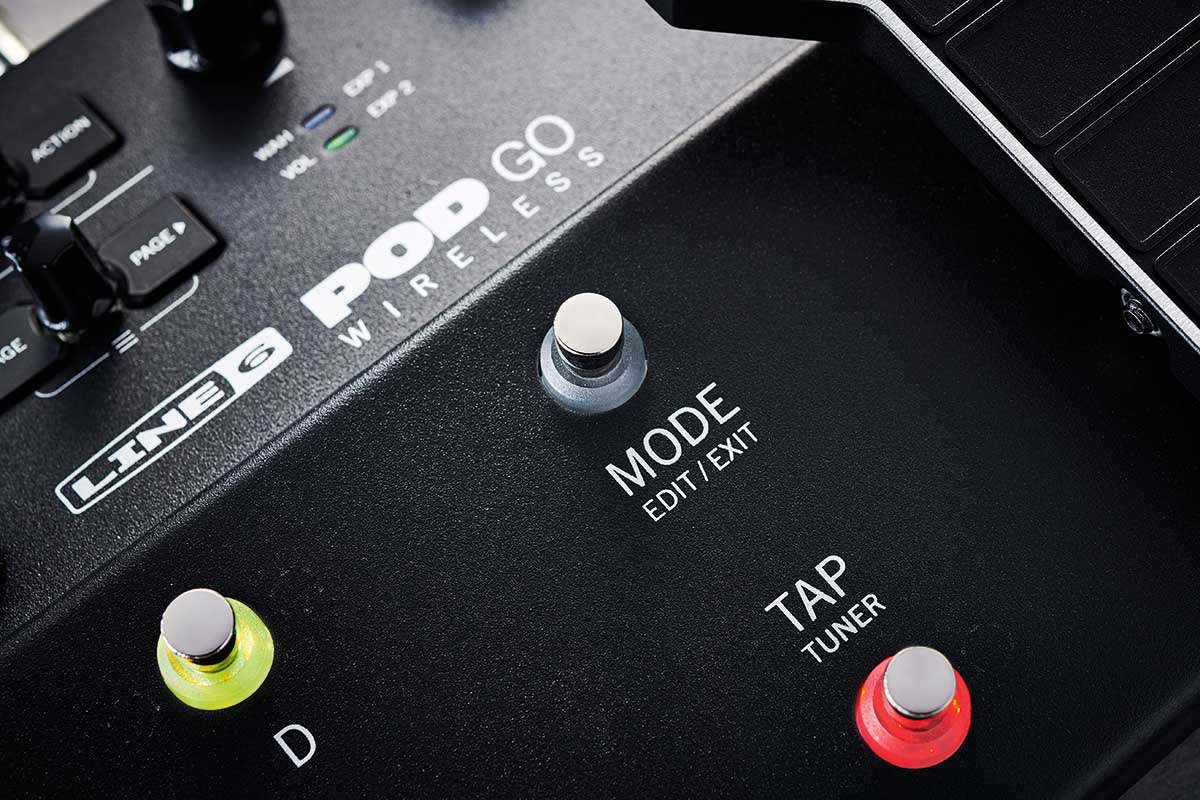
As for the mechanics of the wireless system, the POD Go arrives with a Relay GT10 that should fit into most guitars’ sockets, and can be stored in a recessed area at the back of the unit when not needed. All in, you get around seven hours of playing time from the transmitter.
The POD Go’s display is bright and clear, and it also displays the battery life left in the transmitter, flashing red when there is only 30 minutes remaining. Now, many players, particularly those with the second name Tufnell, might be a little wary of wireless units, but the performance here is excellent, especially when standing in view of the unit but you can really go mobile and get out of the room with it too.
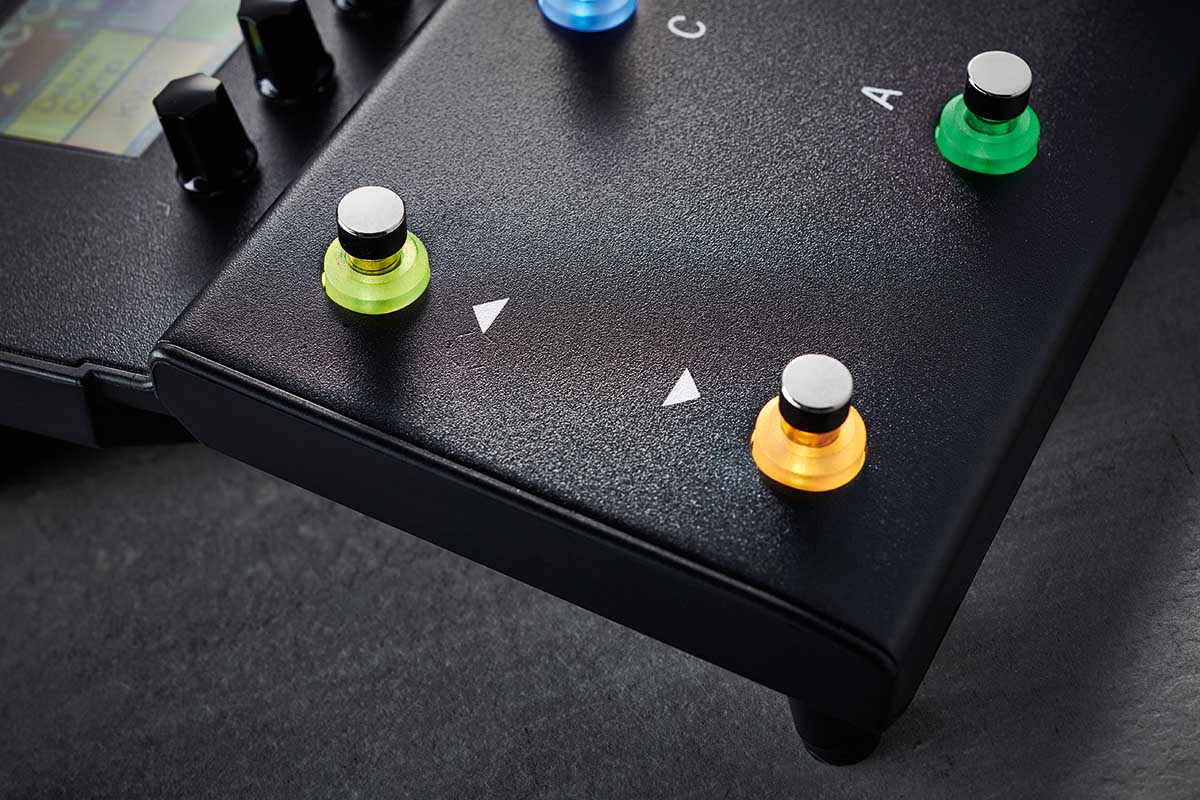
The signal is strong and bright. Indeed, it’s brighter than it would be with your guitar cable’s capacitance trimming off a little high-end, but there is an HF roll-off on hand if your sound is too sharp.
One omission is that of a wireless connection for headphones. That would have been very handy for silent practice on the go, but for the price, the POD Go Wireless is hard to beat. The quality of the sounds remains hugely impressive, and the layout makes it an eminently accessible piece of tech.
MusicRadar verdict: With or without the wireless capability, the POD Go is a classy piece of kit, with a considerable amount of processing power and superb sounds.
Line 6 Pod Go Wireless: The web says
“If you’re just going to have one floor pedal and you find the prices of the Helix range are out of reach then the POD Go may be your ideal purchase. Okay, there’s less flexibility, but that can also translate as being easier to use – and its compact, easily portable size and built-in treadle are real plus points.
“As with others in this genre, it’s a versatile unit that lends itself to onstage use into the PA or in front of your amp, whether standalone or integrated into a larger pedal rig. It’s also got everything you need for home practice and recording, too, including a 24-bit audio interface for recording and a one- or six-switch looper.”
Guitarist
Line 6 Pod Go Wireless: Hands-on demos
Guitar World
PMTV UK
Andertons
Sound Affects
Line 6 Pod Go Wireless: Specifications
- ORIGIN: China
- TYPE: Multi-effects pedal with amp/cabs and effects
- FEATURES: 256 presets, tuner, tap tempo, looper (40 seconds of mono sampling, 20 stereo), MIDI control, USB audio interface capability
- CONTROLS: Volume, 5x soft knobs, 4x buttons, 8x footswitches
- CONNECTIONS: Standard inputs (L/Mono, R), standard outputs (L/Mono, R), Stereo Send, Return/Aux In (L/Mono and R), Exp pedal, MIDI In, MIDI Out/Thru, standard stereo headphone output, USB
- POWER: Supplied 9VDC DC-3h adaptor 2500 mA
- DIMENSIONS: 316 (w) x 120 (d) x 68mm (h)
- CONTACT: Line 6
MusicRadar is the number one website for music-makers of all kinds, be they guitarists, drummers, keyboard players, DJs or producers...
- GEAR: We help musicians find the best gear with top-ranking gear round-ups and high-quality, authoritative reviews by a wide team of highly experienced experts.
- TIPS: We also provide tuition, from bite-sized tips to advanced work-outs and guidance from recognised musicians and stars.
- STARS: We talk to musicians and stars about their creative processes, and the nuts and bolts of their gear and technique. We give fans an insight into the craft of music-making that no other music website can.
Brace yourself: Bryan Adams didn’t buy his first real six-string in a five and dime
“Nobody listens to one genre. I literally don’t know anybody who listens to one genre. You can be a fan of so many different artists at once”: Laufey on what Gen Z can teach the rest of us about how to appreciate music
Bon Iver - ranked: from Sable, Fable to For Emma, Forever Ago











